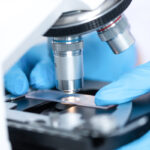What is Preimplantation Genetic Diagnosis (PGD)?

İçindekiler
TogglePreimplantation Genetic Screening During IVF, after genetic testing of embryos, only healthy ones are selected and transferred to the mother. In many cases, potential genetic problems are detected in genetic screenings performed on either the woman or the man, or both.
Preimplantation genetic diagnosis begins with the normal in vitro fertilization process, which includes egg simulation with medication, egg collection, and fertilization. Three days later, the embryo divides into 8 cells. The preimplantation diagnosis steps continue as follows;
- First, one or two cells are taken from the embryo.”
- Next, the cell DNA is taken and copied via polymerase chain reaction (PCR).
- Finally, molecular analysis of the DNA determines whether a problematic gene is present.
After the PGT procedure, the embryo that is determined to be genetically problem-free is transferred using Intra Cytoplasmic Sperm Injection ( ICSI ). Any couple with a genetic disease or at risk can benefit from preimplantation genetic diagnosis.
IVF treatments and PGT applications
As is known, IVF treatments include the most advanced applications that help reproduction with innovations in every period. The purpose of PGT application in IVF treatments is to detect genetically abnormal embryos. Because embryos with abnormal chromosome structures either have difficulty in holding on in the womb or come to the world with very painful problems, causing families to be upset. PGT is especially beneficial for couples who are in consanguineous marriages, couples who have had babies with chromosomal disorders in the past, and recurrent miscarriage cases. Analysis will be done while the embryo is still in the womb and families can be prevented from being devastated by the possibility of miscarriage.
With preimplantation genetic diagnosis;
In the embryo period of the baby that will be born, diseases such as chromosome deficiency or excess can be diagnosed, and again, single gene disorders can be diagnosed in this early period. The biopsy scan that will be applied to the embryo will not harm the development of the baby and will not be affected in this sense. In the detected abnormal situation, the embryo will not be transferred because it is not suitable for transfer to the mother’s uterus and lifelong problems will be prevented before they occur. In addition, when embryos with this type of abnormal genetic coding cause spontaneous pregnancy, they often result in miscarriages. In this way, it is aimed to prevent many pregnancies that will result in miscarriage at an early age.
With PGD;
There is also a search for a solution to the problems of mothers who have had many miscarriages and whose causes are not fully understood. Again, if there is a sick sibling who has been born before, an evaluation can be made in terms of some tissue transplants. PGT includes advanced technical applications that can provide high success in in vitro fertilization treatments. This biopsy can actually provide definitive accuracy in determining the sex of the embryo. However, this determination is not made because it would be unethical and illegal. Only within the framework of the law, gender determination can be made for the sick sibling or for advanced disorders known to be experienced by only one gender.
In which cases is PGT applied in in vitro fertilization treatments?
- For expectant mothers who are 40 years old and above
- Those with sex-linked genetic disorders
- Those with a single gene defect
- Those with chromosomal disorders
- Women who experience chromosomal-related miscarriage
- Those who have had more than 2 unsuccessful IVF attempts
- For a new solution in cases of recurrent miscarriage
- If there is a possibility that chromosome structure disorders in the couple will be seen in their children.
- In couples who have had consanguineous marriages
- For couples who have tried IVF with the classical method but have consistently low results.
- In cases of male-related infertility that are prevalent
- Couples who have had genetically problematic babies want to have a new baby
In IVF treatments, a number of diseases can be diagnosed with PGT. Depending on this diagnosis, a decision is made whether or not to transfer the embryo. Some of the diseases that can be detected are;
- Hemophilia
- Thalassemia
- Achondroplasia
- Retinitispigmentosa
- Cystic fibrosis
- Tay sach’s
- Myotonic dystrophy
- Sickle cell anemia
- Neurofibromatosis





